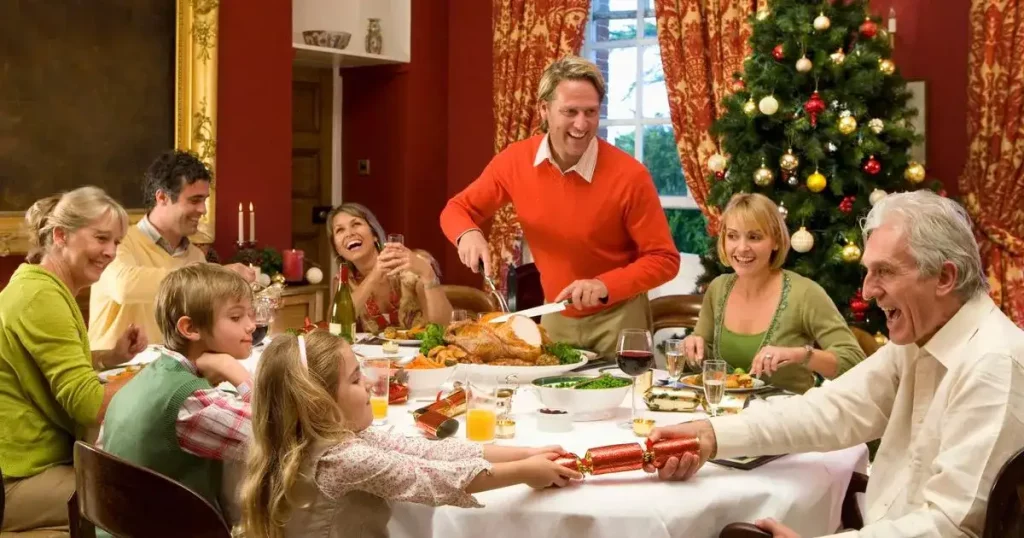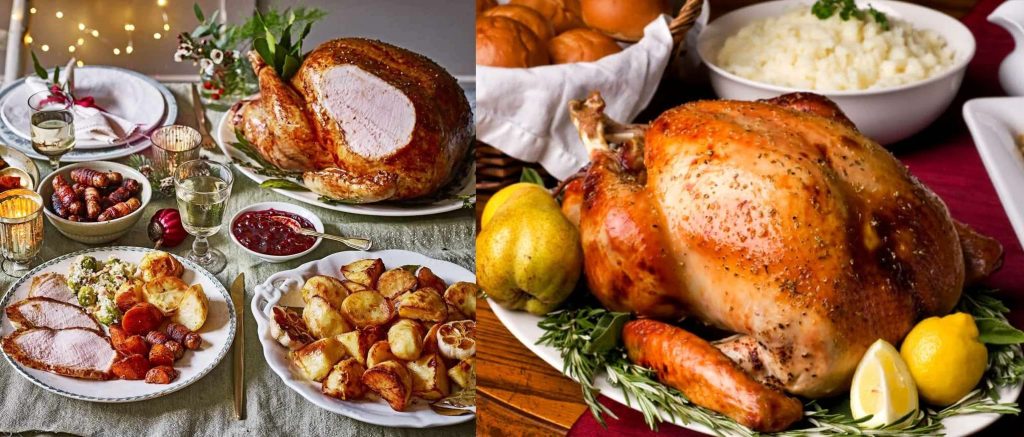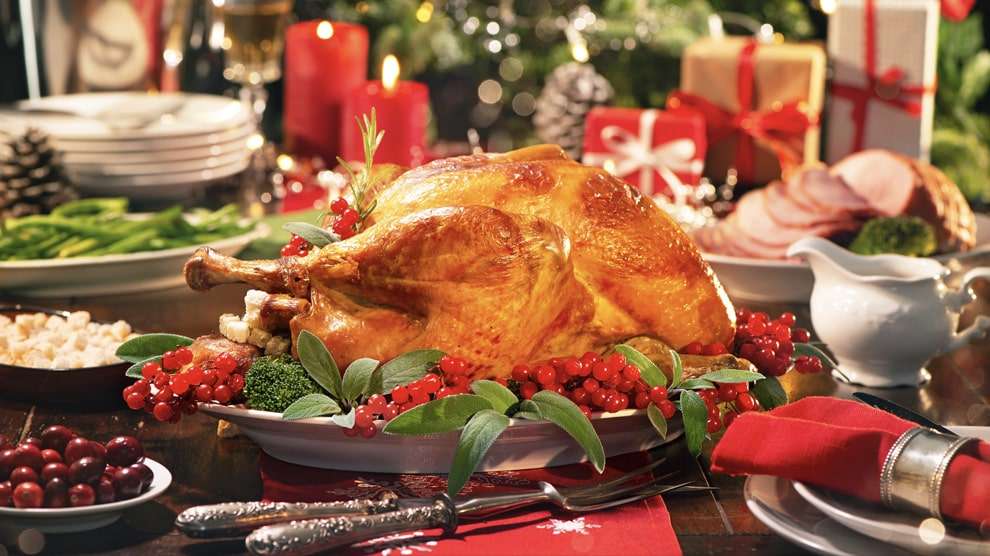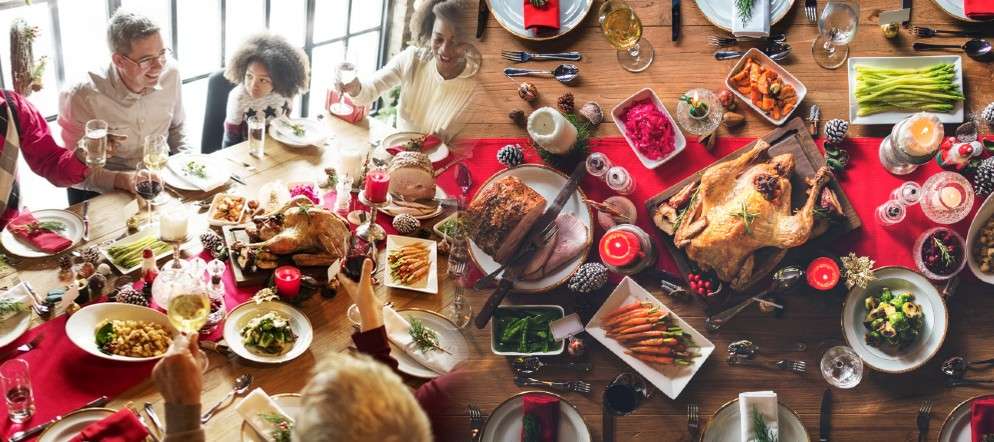As the holiday season approaches, the tantalizing aroma of roasting turkey fills the air, signaling the arrival of the much-anticipated traditional Christmas dinner. For generations, the turkey has reigned as the centerpiece of this festive feast, drawing families and friends together to share in the warmth of the season. But have you ever wondered how this noble bird became synonymous with Christmas? The history behind the tradition of serving turkey on Christmas dates back centuries, intertwined with cultural influences, historical events, and a dash of culinary appeal.
Table of Contents
ToggleA Feast for the Ages
To unravel the tale of the turkey’s prominence at Christmas, we must journey back in time to the medieval and early modern periods. During this era, feasts were an integral part of celebrating holidays, and the Christmas season was no exception. The rich and powerful would host extravagant feasts featuring an array of dishes, including venison, geese, boar, and other exotic meats. However, one bird stood out as a symbol of grandeur and abundance—the turkey.

The Arrival of the Turkey in Europe
The turkey’s journey to European tables was a result of exploration and trade. Christopher Columbus is credited with introducing turkeys to Europe after his voyages to the Americas in the late 15th century. These captivating birds quickly captured the imaginations of Europeans with their distinctive appearance and succulent meat.
By the 16th century, turkeys had become a culinary sensation, enjoyed by royalty and the upper echelons of society. Queen Elizabeth I of England is said to have been one of the early enthusiasts of turkey meat, as it graced her elaborate banquets as a symbol of prestige.

A Bird for All Seasons
The turkey’s popularity eventually extended beyond its initial association with wealth and luxury. Its versatility made it an attractive choice for both lavish feasts and more modest family gatherings. Turkeys were relatively large, making them suitable for feeding a crowd, and their flavorful meat made them a culinary delight.
While turkey was enjoyed throughout the year, it became particularly prominent during celebratory occasions like Christmas. The festive season was a time for indulgence, and serving a turkey conveyed a sense of generosity and abundance. As the tradition took root, the turkey’s ties to Christmas deepened, solidifying its place as the star of the holiday table.

A Dickensian Influence
The popularity of turkey at Christmas received a significant boost from none other than Charles Dickens. His novella “A Christmas Carol,” published in 1843, depicted the Cratchit family enjoying a lavish Christmas dinner featuring a large, succulent turkey. Dickens’ vivid description of the Cratchits’ festive feast resonated with readers and solidified the association between turkey and Christmas.
A Modern-Day Tradition
Fast forward to the present day, and the tradition of serving turkey on Christmas has become deeply ingrained in cultures around the world. Whether roasted, stuffed, or glazed, the turkey remains a beloved symbol of togetherness and celebration during the holiday season. It’s a dish that bridges generations, uniting families and friends in a shared appreciation for delicious food and the spirit of Christmas.

Some classic Turkey dishes in Traditional Christmas Dinner
Here is a list of some classic turkey dishes that are commonly enjoyed as part of a traditional Christmas dinner:
- Roast Turkey: The quintessential centerpiece of a Christmas dinner, a whole turkey is seasoned, roasted, and basted to perfection. It’s often served with flavorful gravy made from the drippings.
- Turkey Stuffing or Dressing: A mixture of breadcrumbs, herbs, vegetables, and sometimes meat, stuffing is baked inside the turkey to absorb its flavors. If prepared outside the bird, it’s referred to as dressing.
- Turkey Gravy: Rich and savory, turkey gravy is made from the pan drippings of the roasted turkey. It’s often drizzled over slices of turkey and other side dishes.
- Turkey Giblet Gravy: A variation of turkey gravy that includes the liver, heart, gizzard, and neck of the turkey, cooked and chopped to add depth of flavor.
- Herb-Roasted Turkey: The turkey is rubbed with a blend of fresh herbs like rosemary, thyme, and sage before roasting, infusing it with aromatic flavors.
- Citrus-Glazed Turkey: A tangy and sweet glaze made with citrus fruits like oranges and lemons is brushed over the turkey as it roasts, creating a delightful contrast of flavors.
- Cranberry-Stuffed Turkey: Whole cranberries or cranberry sauce are used as a stuffing or garnish for the turkey, adding a burst of tartness and color.
- Smoked Turkey: The turkey is smoked over wood chips, imparting a smoky flavor to the meat. It can be served as a whole turkey or as smoked turkey slices.
- Maple-Glazed Turkey: A glaze made with maple syrup and other spices is brushed over the turkey, creating a sweet and savory crust as it roasts.
- Turkey Roulade: Boneless turkey breast is flattened, filled with a savory stuffing or herb mixture, rolled, and then roasted or grilled.
- Bacon-Wrapped Turkey: Strips of bacon are wrapped around the turkey to add flavor and keep the meat moist during cooking.
- Turkey Pot Pie: Leftover turkey meat is combined with vegetables and a creamy sauce, then encased in a flaky pie crust for a comforting dish.
- Turkey Shepherd’s Pie: A twist on the classic shepherd’s pie, this version uses minced turkey mixed with vegetables and topped with mashed potatoes.
- Turkey Casserole: Chunks of cooked turkey are layered with stuffing, gravy, and vegetables, then baked in a casserole dish.
- Turkey and Cranberry Sandwiches: After the main Christmas meal, leftover turkey slices are often enjoyed in sandwiches with cranberry sauce, gravy, and even stuffing.
- Turkey Soup: A hearty soup made with turkey broth, leftover turkey meat, vegetables, and often some noodles or rice.
- Turkey Croquettes: Leftover turkey is combined with breadcrumbs, eggs, and seasonings, then formed into patties and fried until golden.
- Turkey Tacos or Wraps: Leftover turkey can be used to create flavorful tacos or wraps with a variety of fillings and toppings.
- Turkey Curry: A creative way to use leftover turkey, curry dishes add a spicy and aromatic twist to the traditional Christmas flavors.
- Turkey and Wild Rice Casserole: A comforting casserole made with cooked turkey, wild rice, vegetables, and a creamy sauce.
These are just a few examples of the many delicious turkey dishes that can grace the Christmas dinner table. The versatility of turkey allows for a wide range of creative preparations, making it a cherished and adaptable ingredient for festive holiday meals.

Conclusion
The turkey’s journey from the Americas to European tables, its rise from a symbol of prestige to a cherished holiday tradition, and its enduring role in literature and culture all contribute to its prominence as the star of the Christmas dinner table. As we gather with loved ones to celebrate the season, let us pause to appreciate the rich history and cultural significance behind the succulent turkey—a bird that continues to bring joy, comfort, and a sense of unity to our festive gatherings.












+ There are no comments
Add yours